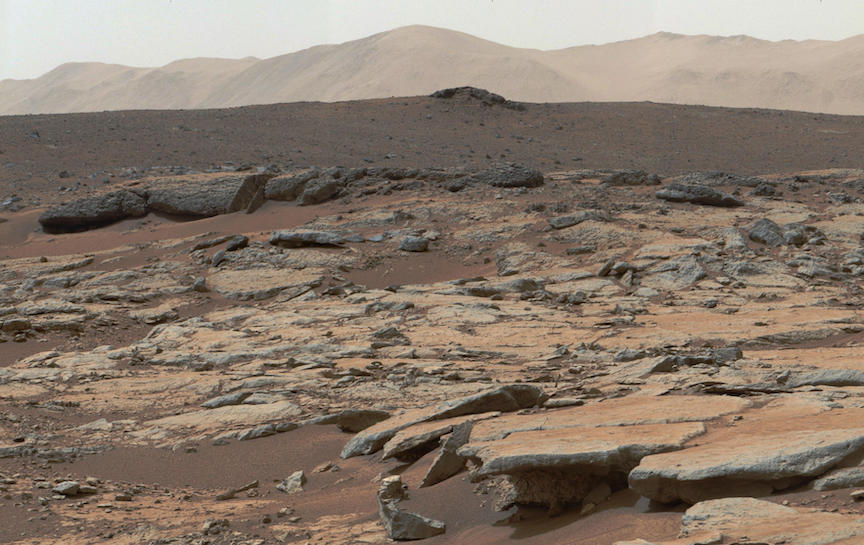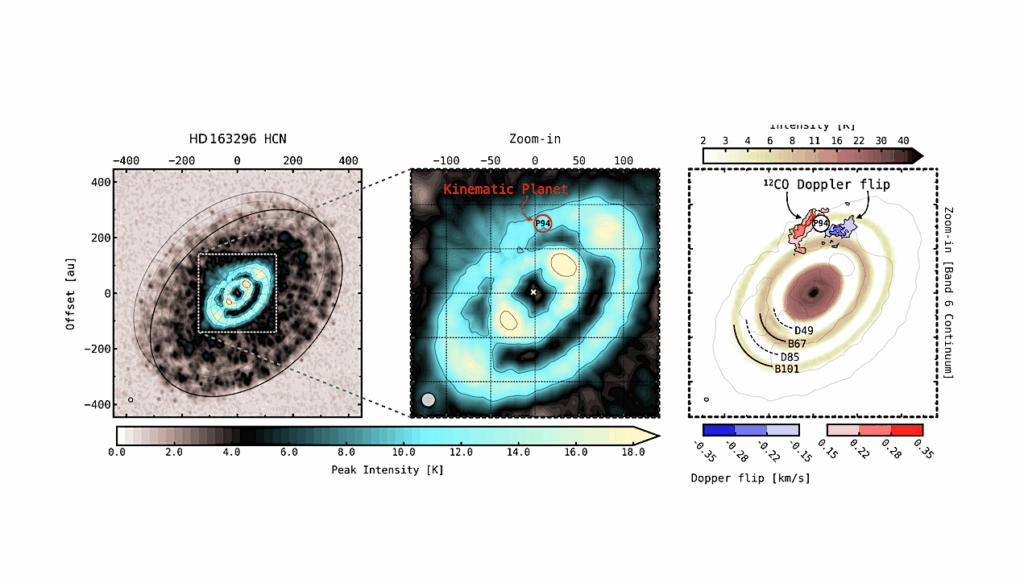No Oxygen Was Required To Make Manganese Oxides Found On Mars

When NASA’s Mars rovers found manganese oxides in rocks in the Gale and Endeavor craters on Mars in 2014, the discovery sparked some scientists to suggest that the red planet might have once had more oxygen in its atmosphere billions of years ago.
The minerals probably required abundant water and strongly oxidizing conditions to form, the scientists said. Using lessons learned from Earth’s geologic record, scientists concluded that the presence of manganese oxides indicated that Mars had experienced periodic increases in atmospheric oxygen in its past — before declining to today’s low levels.
But a new experimental study from Washington University in St. Louis upends this view.
Scientists discovered that under Mars-like conditions, manganese oxides can be readily formed without atmospheric oxygen. Using kinetic modeling, the scientists also showed that manganese oxidation is not possible in the carbon dioxide-rich atmosphere expected on ancient Mars.
“The link between manganese oxides and oxygen suffers from an array of fundamental geochemical problems,” said Jeffrey Catalano, a professor of earth and planetary sciences in Arts & Sciences and corresponding author of the study published Dec. 22 in Nature Geoscience. Catalano is a faculty fellow of the McDonnell Center for the Space Sciences.
The first author of the study is Kaushik Mitra, now a postdoctoral research associate at Stony Brook University, who completed this work as part of his graduate research at Washington University.
Mars is a planet rich in the halogen elements chlorine and bromine compared to Earth. “Halogens occur on Mars in forms different from on the Earth, and in much larger amounts, and we guessed that they would be important to the fate of manganese,” Catalano said.
Catalano and Mitra conducted laboratory experiments using chlorate and bromate — dominant forms of these elements on Mars — to oxidize manganese in water samples that they made to replicate fluids on the Mars surface in the ancient past.
“We were inspired by reactions seen during chlorination of drinking water,” Catalano said. “Understanding other planets sometimes requires us to apply knowledge gained from seemingly unrelated fields of science and engineering.”
The scientists found that halogens converted manganese dissolved in water into manganese oxide minerals thousands to millions of times faster than by oxygen. Further, under the weakly acidic conditions that scientists believe were found on the surface of early Mars, bromate produces manganese oxide minerals more quickly than any other available oxidant. Under many of these conditions, oxygen is altogether incapable of forming manganese oxides.
“Oxidation does not necessitate the involvement of oxygen by definition,” Mitra said. “Earlier, we proposed viable oxidants on Mars, other than oxygen or via UV photooxidation, that help explain why the red planet is red. In the case of manganese, we just did not have a viable alternative to oxygen that could explain manganese oxides until now.”
The new results alter foundational interpretations of the habitability of early Mars, which is an important driver of ongoing research by NASA and the European Space Agency.
But just because there was likely no atmospheric oxygen in the past, there’s no particular reason to believe that there was no life, the scientists said.
“There are several life forms even on Earth that do not require oxygen to survive,” Mitra said. “I don’t think of it as a ‘setback’ to habitability — only that there was probably no oxygen-based lifeforms.”
Extremophile organisms that can survive in a halogen-rich environment — like the salt-loving single-celled organisms and bacteria that thrive in the Great Salt Lake and the Dead Sea on Earth — might also do well on Mars.
“We need more experiments conducted in diverse geochemical conditions that are more relevant to specific planets like Mars, Venus, and ‘ocean worlds’ like Europa and Enceladus in order to have the correct and full understanding of the geochemical and geological environments on these planetary bodies,” Mitra said. “Every planet is unique in its own right, and we cannot extrapolate the observations made on one planet to exactly understand a different planet.”
Formation of manganese oxides on early Mars due to active halogen cycling, Nature Geoscience
Astrobiology








